This blog exploring the impact of media through weekly reflections from MDA20009. Each post connects the course content with real-world examples and critical insights. “Portions of this site and the works within it are being produced with the intention of critique and/or educational use under Australia's 'fair dealing' exceptions to copyright (Section 40 & 41). However, if you feel your IP is being infringed, please contact my service provider (tumblr) with the appropriate DMCA requests, as I, the single author take full responsibility for the content of this site.”
Don't wanna be here? Send us removal request.
Text
Week 12: Crowd sourcing in times of crisis
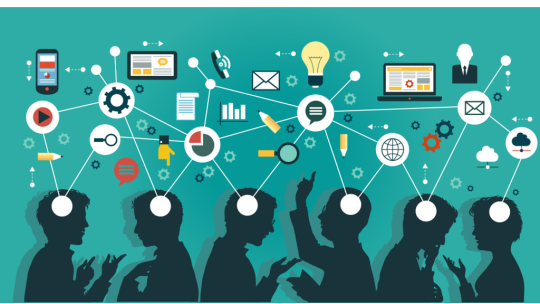
Hey friends, we’ve made it to the final post! This week, we’re looking at how people come together online during emergencies, using crowdsourcing to share info, map crisis zones, and provide real help.
In this blog, I’ll break down what crowdsourcing is, how it works during disasters, and why it matters. We’ll look at real examples, the pros and cons, and how we can play a role as responsible digital citizens. Let’s get into it!
Crowdsourcing is the practice of obtaining services, ideas, or information by soliciting contributions from a large group of people, typically via the internet rather than relying solely on traditional experts or institutions. The concept was first popularized by Jeff Howe in 2006, who defined it as "the act of taking a job traditionally performed by a designated agent and outsourcing it to an undefined, generally large group of people in the form of an open call" (Howe 2006). In the context of crisis response, crowdsourcing enables individuals to collaborate in real time, sharing local knowledge, resources, and observations to support emergency efforts. It is especially powerful when institutional responses are delayed or overwhelmed, allowing affected communities to take an active role in information-gathering, mapping, and aid coordination (Dave 2017).

The biggest advantage of crowdsourcing during a crisis is speed. Local people can report updates as events happen, often faster than traditional authorities. It also makes use of local knowledge, which helps responders identify real needs on the ground. Crowdsourcing encourages community participation, giving people a voice in the response effort. It’s also low-cost and scalable as anyone with an internet connection can contribute.
However, there are downsides. The most pressing issue is accuracy. In emergencies, misinformation can spread quickly and cause panic. There are also privacy concerns such as sharing personal data or location can put people at risk. Lastly, Digital inequality means not everyone has access to crowdsourcing tools or reliable internet, potentially leaving out vulnerable groups such as those in rural areas, low-income communities, or conflict zones (Robinson et al. 2015).
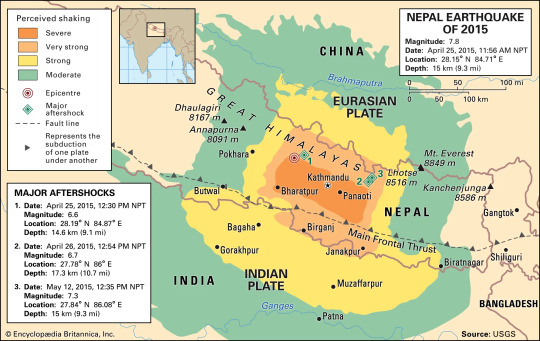
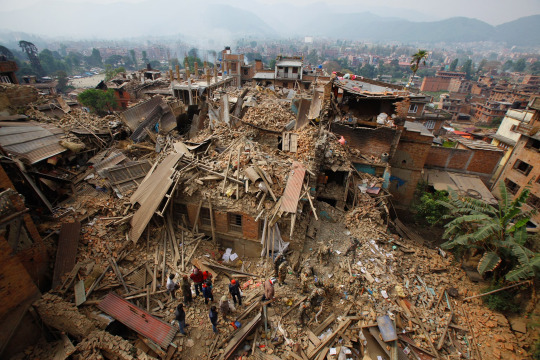
A powerful example of crowdsourcing in action is the use of OpenStreetMap during the Nepal earthquake 2015. After the disaster, much of the country’s infrastructure was damaged or unmapped, which made it difficult for aid agencies to reach affected areas. In response, thousands of online volunteers including many of outside Nepal, used satellite imagery to update OpenStreetMap. They added roads, buildings, and landmarks to help humanitarian teams navigate the crisis zone. This data was used by the Red Cross, UN agencies, and local NGOs to direct resources and plan rescues. What made this effort remarkable was the global collaboration. Volunteers didn’t need to be experts, just willing to help. This case proves that crowdsourcing, when organized and ethical, can bridge the gap between local needs and global response (Dave 2017).
youtube
As digital tools evolve, the future of crowdsourcing looks promising. Technologies can improve verification, security, and inclusivity. More governments and NGOs are also learning to integrate crowdsourced data into official disaster response. However, the key challenge will always be balancing speed with responsibility. Platforms must continue improving transparency and user safety, while users must be aware of what they share, why it matters, and who might be affected.
To sum up, crowdsourcing shows us that when people connect online with purpose, they can make a real difference. In times of crisis, digital platforms turn everyday users into part of the solution like mapping danger zones, sharing resources, and offering hope. But with this power comes responsibility. As digital citizens, it’s on us to act with care, empathy, and integrity.
Thanks for following along throughout my blogs. I’ve loved exploring these topics with you, see you!
References:
Dave, A 2017, ‘Digital Humanitarians: How Big Data Is Changing the Face of Humanitarian Response’, Journal of Bioethical Inquiry, vol. 14, no. 4, pp. 567–569.
Howe, J 2006, The Rise of Crowdsourcing, Wired Magazine, vol. 14, no. 6, viewed 11 June 2025, <https://www.wired.com/2006/06/crowds/>.
Internet Geography 2015, Nepal Earthquake 2015 - Internet Geography, viewed 11 June 2025, <https://www.internetgeography.net/topics/nepal-earthquake-2015/>.
Jay Nepal - Action Volunteers 2015, Nepal Earthquake 2015: JAY NEPAL - Action Volunteers, YouTube, viewed 12 June 2025, <https://www.youtube.com/watch?v=IYUmd_va7VM>.
Robinson, L, Cotten, SR, Ono, H, Quan-Haase, A, Mesch, G, Chen, W, Schulz, J, Hale, TM & Stern, MJ 2015, ‘Digital Inequalities and Why They Matter’, Information, Communication & Society, vol. 18, no. 5, pp. 569–582.
0 notes
Text
Week 11: Digital Citizenship and Conflict: Social Media Governance

You're here again, that makes my day! Let's keep the momentum going with today's post.
We all use social media to post, scroll, comment, laugh, share news daily. But behind every post is a complex system of rules, algorithms, and moderation policies that shape what we see and say online. But have you ever stopped to think about who sets those rules and how they impact our experience? So in this blog, we’re going to explore how social media platforms manage content, the conflicts that arise from moderation decisions, and why understanding these systems is essential for being a responsible digital citizen.
First of all, what is social media governance? It refers to the way social media platforms like Instagram, Twitter, TikTok, and Facebook manage their content and communities. This includes moderation policies, community guidelines, algorithmic controls, and the decisions around which users or posts are removed, flagged, or promoted. These systems are designed to create safer spaces and prevent harm but they also give platforms enormous power to control public conversation (Gillespie 2018). As users of these platforms, we become part of a digitally governed environment, where our actions are shaped not just by social norms, but also by software rules and automated moderation systems.
Understanding governance is an important part of being a responsible digital citizen. Social media has become central to how we communicate, access news, express opinions, and engage in political activism. But when governance is inconsistent, biased, or unclear, it can cause harm especially to marginalized users. For example, over-moderation can silence valid voices or suppress important discussions, while under-moderation can allow hate speech, misinformation, or abuse to spread unchecked. As digital citizens, we need to be aware of how these dynamics affect the communities we participate in and speak up when governance systems fall short.

During the COVID-19 pandemic, YouTube became a key platform for news, education, and public health messaging but it also became a major source of misinformation. In response, YouTube implemented strict content moderation policies aimed at removing videos that spread false health information, such as anti-vaccine claims or conspiracy theories about the virus’s origin (YouTube Help 2021).
While many supported the move to combat harmful content, others criticized the platform for overstepping and removing legitimate discussions or critical perspectives on evolving scientific data. Several doctors, scientists, and content creators reported having their videos demonetized or deleted, even when they were citing new or nuanced studies. This raised questions about who decides what counts as misinformation, and whether automated moderation tools can fairly judge complex scientific discussions.
This case highlights the tension between public safety and free expression, especially during a crisis. YouTube’s efforts to control misinformation were necessary, but the lack of transparency and appeal processes left many users feeling silenced and frustrated, revealing the need for more balanced and humanized governance on digital platforms.
YouTube deletes 30,000 vaccine misinfo videos
When social media platforms fail to govern effectively, the consequences can be significant, both online and in real life. Poor governance can lead to the unchecked spread of misinformation, especially during crises like elections or public health emergencies. False information not only misleads users but can also incite fear, distrust, and even violence. Additionally, inconsistent or biased content moderation can disproportionately impact marginalized users, including women, LGBTQ individuals, and people of color, whose content is more likely to be flagged, removed, or suppressed by automated moderation tools (Noble 2018). This undermines freedom of expression and worsens inequality online. Moreover, unclear or poorly communicated moderation policies can result in users feeling confused, censored, or unfairly treated which might damage trust in platforms and weakening their credibility as public spaces for discussion and debate.

As digital citizens, we have the responsibility to be informed, critical, and active participants in the online spaces we inhabit. First, we should educate ourselves about platform policies and moderation systems so that we can navigate them responsibly. Media and software literacy help us recognize if governance is working fairly or not. Second, we should advocate for transparency and accountability, pushing platforms to clearly explain their moderation decisions, provide appeals processes, and ensure that rules are applied consistently to all users (Gillespie 2018). Third, we can support efforts to regulate platform power through democratic processes, such as supporting data protection laws and digital rights initiatives. Most importantly, we should strive to foster respectful and inclusive behavior in our own online communities. By being mindful of how we interact with others, report harmful content appropriately, and amplify diverse voices, we help shape healthier and more equitable digital environments.
In conclusion, social media governance plays a huge role in shaping our online experiences. Being a responsible digital citizen, understanding how these systems work, we can make the internet a safer place for everyone.
Thanks for sticking around, see you in the next post!
References:
BBC News 2021, ‘YouTube deletes 30,000 vaccine misinfo videos’, viewed 10 June 2025, <https://www.bbc.com/news/technology-56372184>.
Gillespie, T 2018, Custodians of the Internet: Platforms, Content Moderation, and the Hidden Decisions That Shape Social Media, Yale University Press, New Haven.
Noble, SU 2018, Algorithms of Oppression: How Search Engines Reinforce Racism, New York University Press.
YouTube Help 2021, COVID-19 medical misinformation policy, viewed 10 June 2025, <https://support.google.com/youtube/answer/13813322?hl=en>.
0 notes
Text
Week 10: Gaming Communities, Social Gaming and Live Streaming

Hey! Great to have you back. Today's post is all about gaming, let's geek out!
I’ve been thinking about how much gaming has changed lately, not just the games themselves, but the whole experience around them. It’s no longer just about sitting alone with a controller. Through gaming communities, social gaming platforms, and live streaming, players not only share gameplay but also build relationships, exchange knowledge, and even create new forms of entertainment and culture.
In this blog, we will explore how these communities foster connection and cultural expression, and why it’s important to understand the opportunities and challenges they present. As gaming becomes an increasingly influential part of digital life, issues such as inclusivity, platform responsibility, and positive community building are critical for us as players, viewers, and responsible digital citizens. By engaging with these spaces thoughtfully, we can help shape them into welcoming environments for everyone.

Social gaming refers to video games that integrate social interaction into the core of gameplay. It allows players to connect, communicate, and collaborate in real-time, either through multiplayer modes, voice and text chat, or shared experiences on social media platforms (Quandt & Kröger 2013). Games like Among Us, Fortnite, and Minecraft thrive on their ability to turn gaming into a shared social activity, not just an individual pastime.
Live streaming takes this interaction further by enabling players to broadcast their gameplay live to audiences on platforms like Twitch, YouTube Gaming, and Facebook Gaming. Streaming creates a participatory experience where viewers can engage with streamers through chat, building dynamic online communities (Brewer et al. 2023). In fact, many Twitch channels function more like digital community hubs than pure gaming broadcasts (Johnson & Woodcock 2018).
Understanding these are important because they turn gaming into a powerful space for social connection, cultural exchange, and sometimes even activism. However, they also raise questions about moderation, inclusivity, and the responsibility of both platforms and participants. As gaming spaces become more social and public, issues such as harassment, toxic behavior, and exclusion can arise, particularly in live chats and voice channels (Kowert 2015). Without proper moderation tools or clear community guidelines, marginalized groups such as women, LGBTQ players, and people of color can face disproportionate abuse (Fox & Tang 2017). Therefore, it is crucial for platforms to implement robust moderation systems and actively promote positive community norms, while players themselves must engage responsibly and help maintain respectful and inclusive environments. Ensuring that gaming spaces are safe and welcoming is key to allowing them to thrive as hubs of social connection and creativity.

An example of gaming as a social and cultural space is the Fortnite x Travis Scott Astronomical concert held in April 2020. Over 12.3 million players attended live inside Fortnite, experiencing an interactive concert that transformed the game world into a shared musical event (Spangler 2020).
Players weren’t just watching, they were dancing with in-game emotes, reacting in real-time, and sharing the experience with friends. This event demonstrated how games can now act as virtual venues, hosting large-scale social gatherings that create a sense of community and shared culture.
It also highlights the power of gaming platforms to blend entertainment, community interaction, and live events in innovative ways. As Johnson & Woodcock (2018) note, games like Fortnite are evolving into hybrid social spaces where players are both audience members and participants. This shift opens exciting possibilities but also raises questions about platform responsibility, community standards, and how these spaces should be moderated to remain inclusive and safe.
youtube
As gaming continues to evolve into a space for social interaction and cultural expression, it is vital that we, as digital citizens, engage with these platforms thoughtfully and responsibly. Social gaming and live streaming offer exciting opportunities to build community and creativity, but they also present challenges that require awareness and action. By supporting inclusive environments, advocating for better moderation, and contributing positively within these spaces, we can help ensure that gaming communities remain welcoming for everyone. The more we understand and reflect on the social dynamics of gaming, the more we can shape these digital worlds into spaces where connection, creativity, and culture truly thrive.
Thanks for reading this post. Hope you found it interesting, stay tuned for next week’s post, and I’ll see you there!
References:
Brewer, J, Ruberg, B, Amanda & Persaud, CJ 2023, Real Life in Real Time, MIT Press.
Fox, J & Tang, WY 2017, ‘Women’s experiences with general and sexual harassment in online video games: Rumination, organizational responsiveness, withdrawal, and coping strategies’, New Media & Society, vol. 19, no. 8, pp. 1290–1307.
Johnson, MR & Woodcock, J 2018, ‘The impacts of live streaming and Twitch.tv on the video game industry’, Media, Culture & Society, vol. 41, no. 5, pp. 670–688.
Kowert, R 2015, Video games and social competence, New York Routledge.
Quandt, T & Kröger, S 2013, Multiplayer, Routledge.
Scott, T 2020, Travis Scott and Fortnite Present: Astronomical (Full Event Video), YouTube.
Spangler, T 2020, Travis Scott Destroys ‘Fortnite’ All-Time Record with 12.3 Million Live Viewers, Variety.
0 notes
Text
Week 9: Digital Citizenship and Software literacy: Instagram Filters

Hey, thanks for stopping by again. Let's jump right into today's topic!
This week’s topic explores the role of Instagram filters as a key example of how everyday digital tools shape the way we see ourselves and others. While filters are often used for fun, creativity, or self-expression, they also have deeper effects that are worth examining. This is where two important concepts come into focus, digital citizenship and software literacy. In the case of Instagram filters, these tools may seem harmless on the surface, but they often subtly change beauty standards and affect people’s self-image, especially among younger users. This makes it important not only to use filters carefully, but also to understand the technology behind them and how they impact digital culture.
Digital citizenship is about how we behave online, ethically, critically, and responsibly (Team 2023). It’s more than just avoiding online drama or being polite; it includes understanding how digital tools affect ourselves and others.
Software literacy, on the other hand, is about being aware of how the digital tools we use every day are designed, how they function, and how they shape our behaviors and perceptions (Khoo et al. 2017). When it comes to visual social media especially Instagram, filters are a prime example of software that subtly but powerfully shapes identity and self-expression.


The increasing realism and AI-driven precision of face filters make it difficult for users especially youngers to distinguish between reality and augmentation. Without the software literacy to understand how these filters work, many fall into cycles of comparison, self-doubt, and a desire to match these digital ideals offline (Fardouly et al. 2015).
Instagram launched face filters in 2017, similar to what Snapchat had already been doing. This added a new layer of personal transformation, allowing users to smooth skin, reshape facial features, and even alter eye color in real-time. While many filters are used for fun, others fall under the beauty category and that’s where the conversation becomes more serious. Filters like “Paris,” “Glow,” and “Perfect Face” are known for narrowing the nose, enlarging the eyes, lightening the skin, and creating a more symmetrical, ideal appearance.
youtube
In recent years, the term “Snapchat dysmorphia” has been used by doctors and researchers to describe a growing trend where people seeking cosmetic surgery not to look like celebrities or models, but to look like their filtered selfies. This trend has been linked to apps like Snapchat and Instagram, where beauty filters can dramatically reshape facial features such as smoothing skin, enlarging eyes, contouring jawlines, and lightening skin tones. Over time, regular exposure to these filters can distort a person’s self-perception, making them feel that their natural appearance is flawed. This has led to rising concerns about body image issues, particularly among younger users who are still developing their sense of identity. The underlying issue stems from a lack of software literacy, many users don’t realise how filters are designed to reflect narrow beauty ideals. To prevent further harm, platforms should label filtered content more clearly, and digital education should focus on helping users understand how filters manipulate appearance. By promoting digital awareness and self-acceptance, we can reduce the harmful effects of filter-driven beauty standards.

As digital citizens, we should understand how filters impact our appearance and self-esteem, and recognise that not everything we see online is real. Being responsible doesn't mean avoiding filters altogether, it means understanding how they work, questioning their effects, and using them with awareness. With honesty and intention, we can engage with filters more thoughtfully and help create a more positive and authentic online space.
Until next time, happy reading!
References:
Fardouly, J, Diedrichs, PC, Vartanian, LR & Halliwell, E 2015, ‘Social Comparisons on Social media: the Impact of Facebook on Young women’s Body Image Concerns and Mood’, Body Image, vol. 13, no. 1, pp. 38–45.
Global News 2019, Selfie Dysmorphia: How social media filters are distorting beauty 🤳🏽, YouTube.
Khoo, E, Hight, C, Torrens, R & Cowie, B 2017, Software Literacy, Springer briefs in education, Springer Nature (Netherlands).
Migala, J 2018, What Is ‘Snapchat Dysmorphia’? A Detailed Look at the Trend | Everyday Health, EverydayHealth.com.
Team, L 2023, Digital Citizenship: What it is & What it Includes | Learning.com, Learning.
0 notes
Text
Week 8: Body Modification on Visual Social Media

Hello and welcome back to my blog!
So this week, we're diving into something a bit deeper and more personal, body modification on visual social media. Think fillers, tweakments, surgery selfies, and even subtle editing. We're not just talking tattoos and piercings anymore, this goes way beyond that.
Every time I scroll through TikTok or Instagram, it feels like everyone's glowing with poreless skin, perfect jawlines, and symmetrical faces. And sometimes I even catch myself wondering, "Should I do something too?" And that’s when I pause and ask: "Where does personal choice end and social pressure begin?"
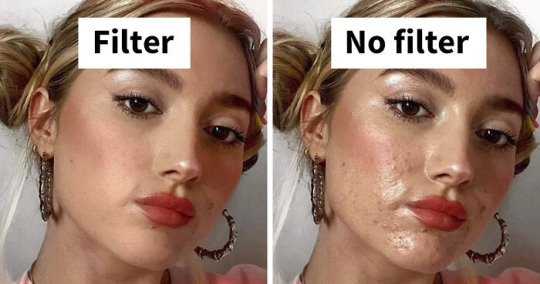
Social media isn't just where we show ourselves, it’s where we shape ourselves literally. Body modification used to be about self-expression, rebellion, or culture. Now, on social media platforms like Instagram and TikTok, it’s often about achieving a certain aesthetic that’s trending.
According to Tiggemann (2022), visual social media platforms have created a performance of perfection, where users especially women and younger audiences start viewing modification not as a bold act of identity, but as a quiet necessity to keep up. It makes me think that if everyone's face is filtered, tweaked, or enhanced, then what does natural even mean anymore?
To be honest, there were times when I edited my photos to make my face slimmer or my skin smoother, and it gave me that tiny hit of confidence. But later, it also left me kind of hollow. I looked in the mirror and started picking apart what didn’t match the edited version of me.
I know I’m not alone in this. A study by Fardouly et al. (2015) found that exposure to appearance-focused social media content was directly linked to increased body dissatisfaction in young women. And with the rise of AI filters and beauty apps like FaceApp and Facetune, it’s even easier to morph your image into a curated ideal.
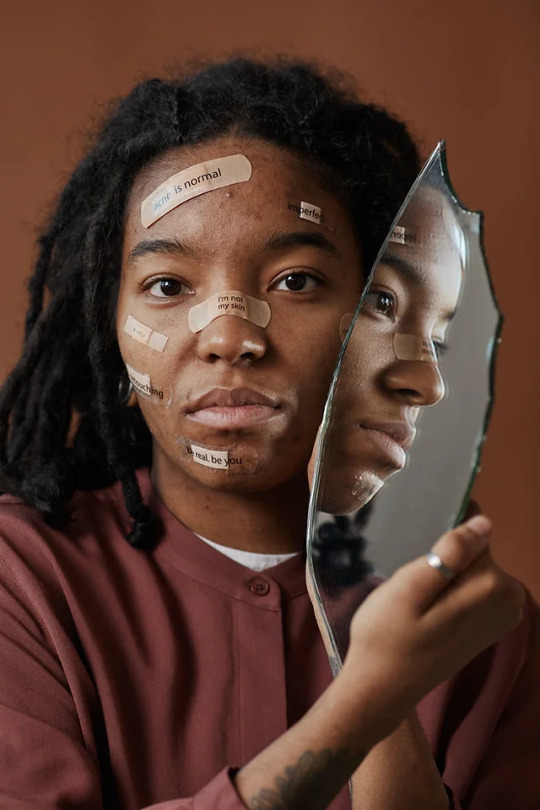
So here's the question I keep coming back to, "Is social media empowering body modification, or pressuring it?" Are we making these changes for ourselves or for the algorithm? For likes? For fitting into a feed? Or becoming the next trending face?
There’s nothing wrong with wanting to feel confident. Cosmetic procedures, filters, and makeup, all of it can be empowering if it’s truly for you. But when it becomes a silent expectation or the norm we’re all supposed to meet? That’s when we need to stop and check in with ourselves.
Social media should be a place for expression instead a mirror maze of pressure and comparison. So the next time when you think about tweaking that photo, ask yourself, "Is this who I want to be or who I feel I have to be?"
It’s okay to love beauty and explore how you look. But it’s also okay to say, "No thanks" to unrealistic standards because not everything needs to be filtered to be worthy of attention.
That's all for now, stay tuned for my next post!
References:
Fardouly, J, Diedrichs, PC, Vartanian, LR & Halliwell, E 2015, ‘Social Comparisons on Social media: the Impact of Facebook on Young women’s Body Image Concerns and Mood’, Body Image, vol. 13, no. 1, pp. 38–45.
Tiggemann, M 2022, ‘Digital modification and body image on social media: Disclaimer labels, captions, hashtags, and comments’, Body Image, vol. 41, pp. 172–180.
TikTok - Make Your Day 2025, Tiktok.com, viewed 3 June 2025, <https://www.tiktok.com/@_kellygooch/video/7486518699784998174?q=instagram%20face&t=1748965331574>.
0 notes
Text
Week 7: Social Media Influencers and the Slow Fashion Movement

Hey friends!
Hope you’re all doing okay this week. I’ve been thinking a lot about fashion lately, not just what to wear, but where it comes from. This week’s topic got me reflecting on how social media and fashion are so connected these days. Like, have you noticed how influencers can totally shape the way we shop? Today, we’re going to dive into how social media influencers are helping to promote the slow fashion movement and why that actually matters.
Brands like Zara, H&M, and Shein pump out cheap clothes super fast, making it easy to buy a lot but wear them only a few times.
On the other hand, slow fashion brands like Patagonia, Reformation, and People Tree focus on sustainability. They use eco-friendly materials, pay fair wages, and design clothes that last longer so you can build a wardrobe that’s better for the planet and feels more personal.
First things first, what is a social media influencer? In simple terms, influencers are people who’ve built a following on social media platforms like Instagram, TikTok, or YouTube, they influence! Whether it’s recommending a new skincare product, styling outfits, or talking about social issues, their content has real power to shape trends and opinions.

Now, what’s the slow fashion movement all about? Slow fashion is kind of like hitting the pause button on all that fast, throwaway clothing culture. It’s about choosing quality over quantity, buying less but buying better, and thinking about the people and processes behind the clothes we wear. According to Vito (2022), slow fashion encourages ethical production, fair wages, environmentally friendly materials, and a longer life cycle for our garments. And honestly it’s more important than ever. The fast fashion industry is responsible for tons of pollution and poor working conditions, and it encourages us to treat clothes like they’re disposable. If fast fashion is all about cheap, trendy clothes that change every week and fall apart after two washes, slow fashion is the exact opposite. It promotes timeless pieces, ethical brands, second-hand shopping, and even repairing what you already own. It’s about buying with intention, not just impulse.

Let’s take an example, do you guys know Venetia La Manna? If not, go check her out! She’s a London-based influencer who calls herself a “recovering fast fashion addict”. Venetia is one of the loudest voices online when it comes to calling out big fashion brands for their shady practices and she does it with style and sass. She uses her Instagram and podcast All The Small Things to talk about sustainability, ethical living, and the realities behind those £5 tops we see online. What I love is how real she is. She’s not saying you have to be perfect, just more mindful. Her posts make you want to care more, shop smarter, and slow down. That’s influencer power being used right.
youtube
Fashion doesn’t have to cost the earth. And we, as digital citizens and everyday consumers, have more influence than we think. Following creators like Venetia reminds us that we don’t need to constantly buy new to feel good. Sometimes, the most sustainable outfit is the one you already own.
So next time you scroll past a haul video or a promotion ad, maybe pause for a sec and ask yourself: "Do I really need this?" If the answer is no, you’re already part of the slow fashion movement!

References:
All The Small Things 2023, @acast, viewed 15 May 2025, <https://shows.acast.com/talkingtastebuds>.
Fast Fashion could never! 2025, www.youtube.com, viewed 15 May 2025, <https://www.youtube.com/shorts/yzfE_4Mns3M>.
SANVT Journal 2020, Fast Fashion vs. Slow Fashion, SANVT, viewed 15 May 2025, <https://sanvt.com/blogs/journal/fast-fashion-vs-slow-fashion?srsltid=AfmBOopy-SLUkGs5UHg7F5eOy3iDMn2ILLst6IefAwvnA2ijqtlRWJC8>.
Vito, F 2022, What Is Slow Fashion and How Can You Join the Movement?, Earth.org, viewed 15 May 2025, <https://earth.org/what-is-slow-fashion/>.
#mda20009#slow fashion#say no to fast fashion#fashion influencers#sustainable fashion#eco fashion#Youtube
1 note
·
View note
Text
Week 6: What is Digital Citizenship? Hashtag Publics, Political Engagement and Activism
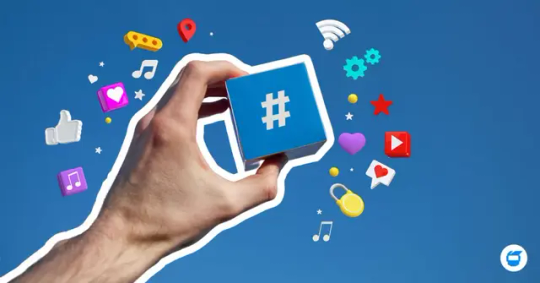
Hey again!
It’s the second post of this blog, and after diving into fandom and reality TV last week, we’re shifting gears a little but not too far off. This week we’re going to explore digital citizenship, and honestly, it really got me thinking about how we show up as citizens, not just in real life, but online. We hear so much about “digital citizenship” but what does it actually mean?
At its core, digital citizenship is about how we behave and participate in online spaces. It’s not just about avoiding scams or protecting your privacy, it’s also about being aware, responsible, and active in digital communities (Ribble 2011). A big part of that includes how we engage with political and social issues through social media platforms like Twitter, Instagram, and TikTok.
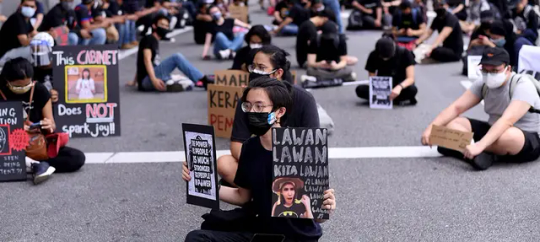
That’s where hashtag publics come in. According to Bruns and Burgess (2015), these are temporary communities formed around a shared hashtag. Unlike traditional publics that gather in physical spaces, hashtag publics form quickly, often in response to breaking news or rising social issues. And even though they’re temporary, they can be incredibly powerful like creating awareness, pressuring leaders, and building solidarity.
This ties closely to political engagement, where people use social media not just for self-expression but to join conversations, challenge injustice, and demand change. It’s activism that lives and breathes online.

A great example of all this in action is the #MilkTeaAlliance. It started in 2020, when Thai Twitter users defended a Thai celebrity who was attacked by Chinese nationalists online. But what started as a small clash over freedom of speech quickly grew into a powerful transnational movement. Activists and citizens from Thailand, Taiwan, Hong Kong, and later Myanmar, came together under the #MilkTeaAlliance banner to support democracy and push back against authoritarianism.
What makes this movement so unique is how it crossed borders. People from different countries, each with their own political struggles, found common ground in their shared love for milk tea, a cultural symbol and their shared desire for freedom. The hashtag became a space for protest art, videos of demonstrations, infographics explaining political situations, and powerful messages of unity. It wasn’t just trending, it was connecting people across Asia.
How the Milk Tea Alliance Is Brewing Solidarity Among Activists in Asia and Beyond
And this wasn’t just “slacktivism.” The hashtag helped shine global attention on pro-democracy movements, especially in Hong Kong and Myanmar, where traditional media often failed to capture the full story. The alliance turned Twitter into a global protest square, accessible to anyone with a phone and Wi-Fi. People weren’t just speaking out; they were creating a collective identity as digital citizens pushing for regional change.
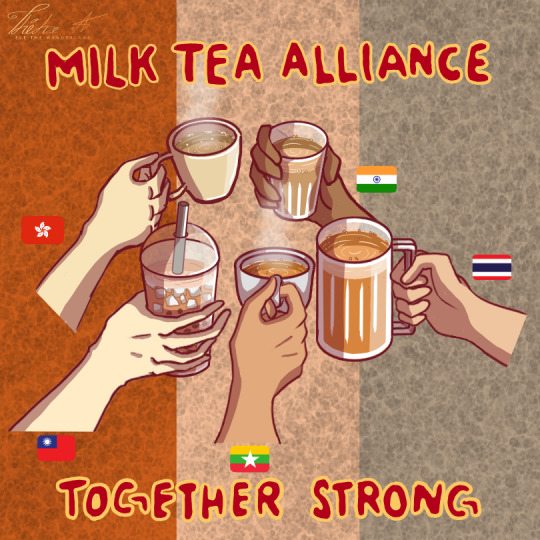
The #MilkTeaAlliance shows us that political engagement today doesn’t always require a protest sign or a speech. Sometimes, it’s a tweet, a shared post, or a digital artwork that starts the wave. Being a digital citizen means knowing how to use these platforms not just to scroll but to stand up.
The Milk Tea Alliance now has an emoji on Twitter.
References:
Barron, L 2020, How the Milk Tea Alliance Is Uniting Pro-Democracy Activists, Time.
Bruns, A. & Burgess, J. 2015, Twitter hashtags from ad hoc to calculated publics. In Rambukkana, Hashtag publics: The power and politics of discursive networks (pp. 13-27), Peter Lang Publishing.
Handley, E & Kuang, W 2021, The Milk Tea Alliance now has an emoji on Twitter. Here’s how the solidarity movement took off, Abc.net.au, ABC News, viewed 15 May 2025, <https://www.abc.net.au/news/2021-04-10/milk-tea-alliance-emoji-twitter-hongkong-taiwan-thailand-myanmar/100060124>.
Ribble, M. 2011, Digital Citizenship in Schools: Nine Elements All Students Should Know, International Society for Technology in Education.
1 note
·
View note
Text
Week 5: Digital Community and Fandom

Welcome to my first blog for MDA20009. This week, we looked at digital fandoms through the lens of reality TV. Wow, it really made me rethink how these shows function. They're not just something people watch passively anymore. Instead, they’ve become interactive experiences where fans don’t just react, they participate, shape conversations, and sometimes even influence what happens next. Thanks to social media, reality TV now lives in two places: on screen and online.
Let’s talk about Love Island. If you’ve ever been on Twitter during an episode, you’ll know what I mean. It’s like a second show, live reactions, memes, debates, and full-on emotional rollercoasters happening in real time. When Faye Winter had her big emotional outburst in the 2021 season, Twitter absolutely exploded. People weren’t just judging her, they were unpacking issues around mental health, emotional manipulation, and even the producers’ role in pushing contestants to their limits. Fans weren’t just reacting, they were calling for accountability. It really shows what Jenkins (2006) meant by participatory culture. The audience isn't just there to watch, they're part of the narrative now.
Faye and Teddy's row sparks record 25,000 of complaints
When Faye Was Told About The 25,000 Ofcom COMPLAINTS Filed Against Her...

Then there’s Too Hot To Handle, the Netflix show that blew up on TikTok. It’s wild how quickly people took clips from the show and turned them into memes, reaction videos, and viral content. I kept seeing people remixing moments from the show into relatable, funny edits, almost giving it a second life online. It’s not just marketing; it’s the fandom doing the work. Andrejevic (2008) would probably call this “the work of being watched”, fans are literally promoting the show while entertaining each other. And because it’s Netflix, everything drops at once, so the online reaction becomes part of the viewing experience. You binge it, then you dive into TikTok or Reddit to see what everyone else thought.


What I’m realising is that reality TV fandoms aren't just about liking a show, they’re about belonging. They offer a sense of connection, shared language like “bombshell” or “it is what it is”, and a way to express opinions, feelings, and creativity. But they also come with responsibility especially when fan commentary can impact real people’s lives. Fandom today is powerful, and reality TV gives it the perfect platform to thrive, for better or worse.
At the end of the day, reality TV isn’t just a guilty pleasure, it’s a space where digital communities come alive. Shows like Love Island and Too Hot To Handle have evolved into interactive experiences, where fans shape the narrative as much as the producers do. Through memes, live tweets, and viral edits, fandoms are building their own versions of the story, finding connection, identity, and even activism along the way. It’s messy, fun, and sometimes problematic, but it shows just how powerful participatory culture has become in the digital age.
References:
Andrejevic, M 2008, Watching television without pity: The productivity of online fans, Television & New Media, vol. 9, no. 1, pp. 24–46.
BBC 2021, ‘Love Island: Faye and Teddy’s row sparks record 25,000 Ofcom complaints’, viewed 15 May, <https://www.bbc.com/news/entertainment-arts-58162817>.
Fancy a Chat? 2022, When Faye Was Told About The 25,000 Ofcom COMPLAINTS Filed Against Her..., YouTube, viewed 15 May 2025, <https://www.youtube.com/watch?v=akp5sTZTsc0>.
Jenkins, H 2006, Fans, bloggers, and gamers: Exploring participatory culture, NYU Press, New York.
1 note
·
View note